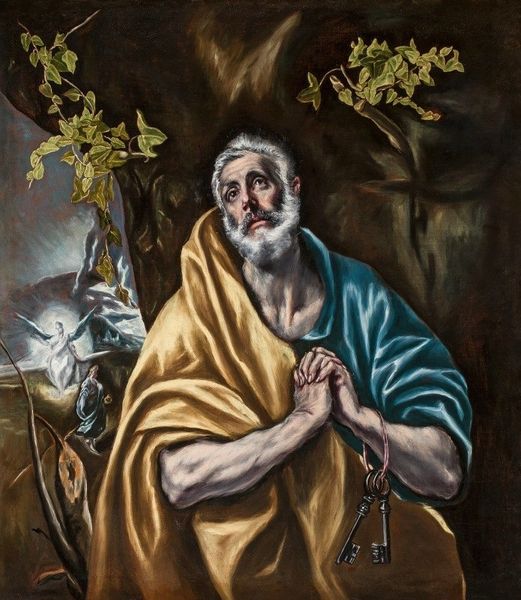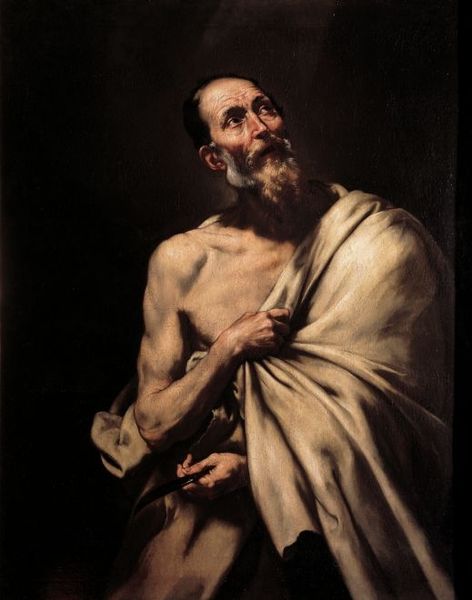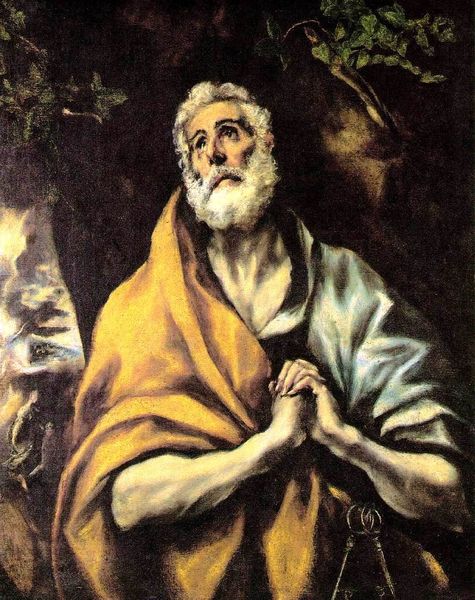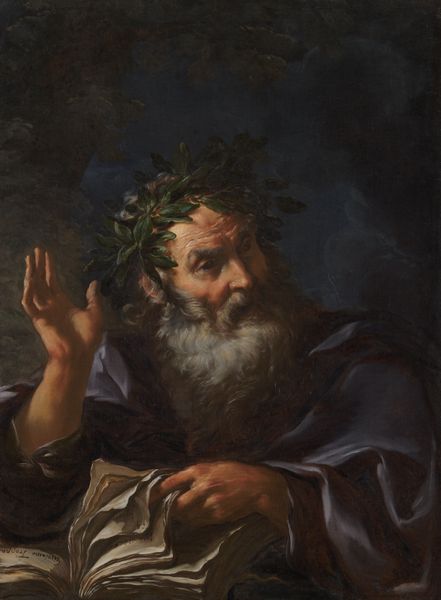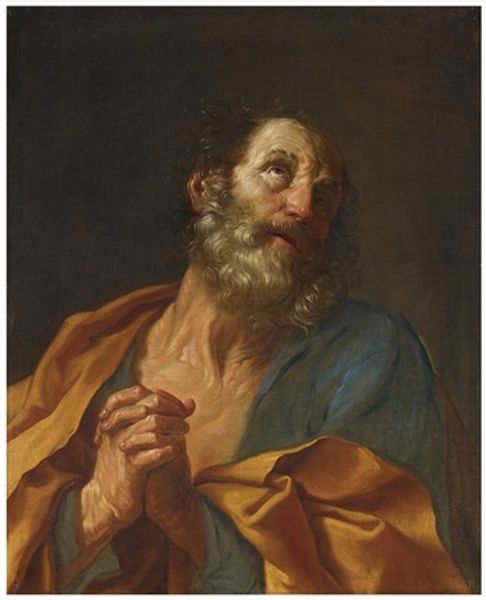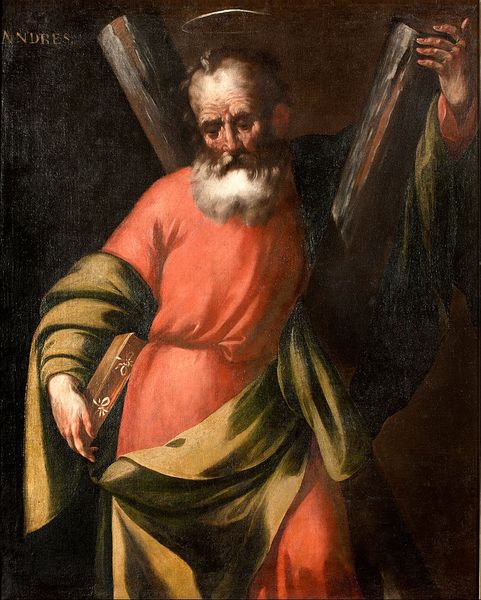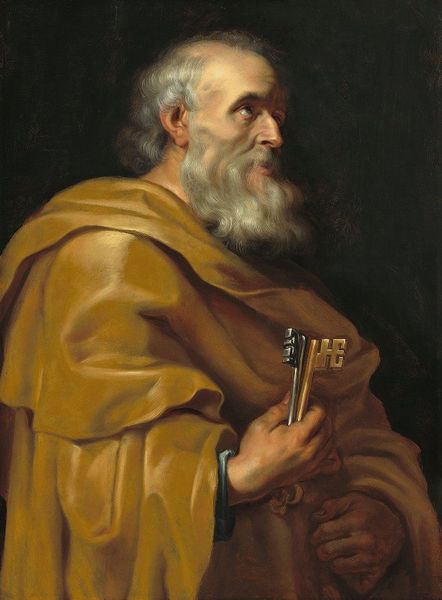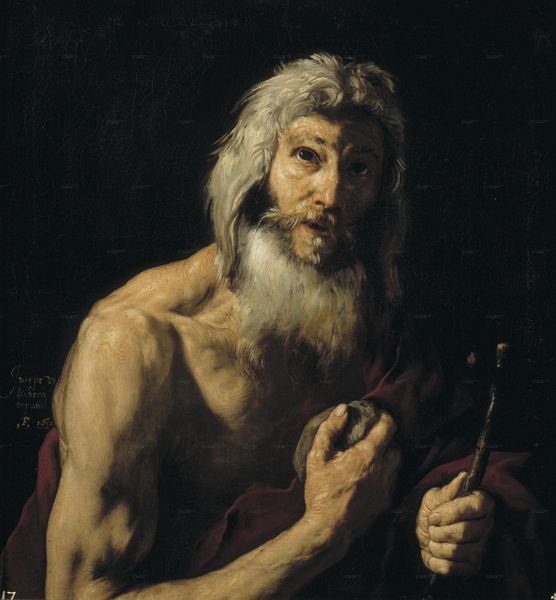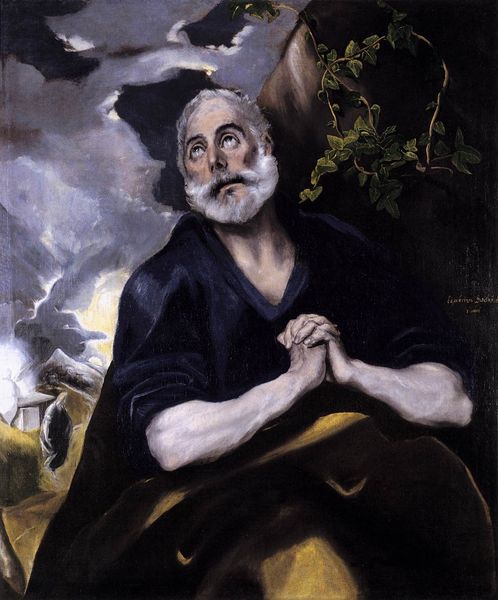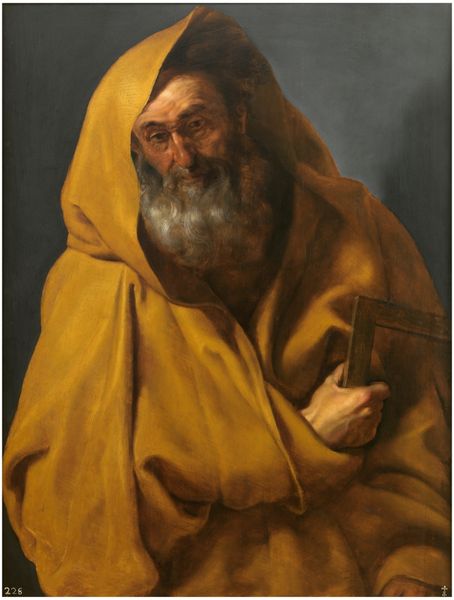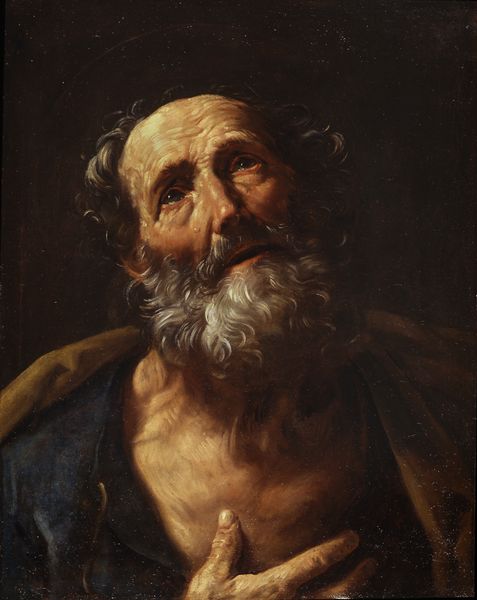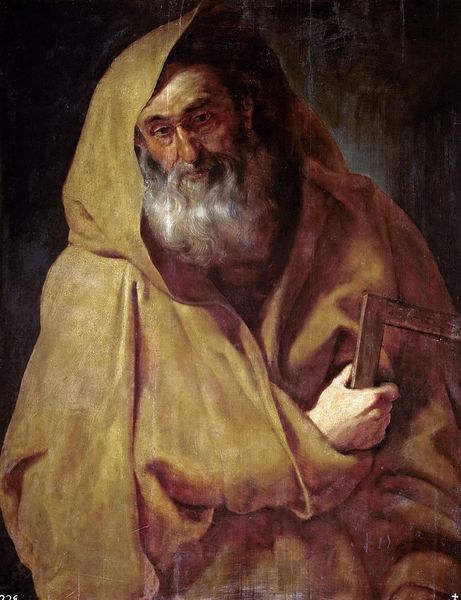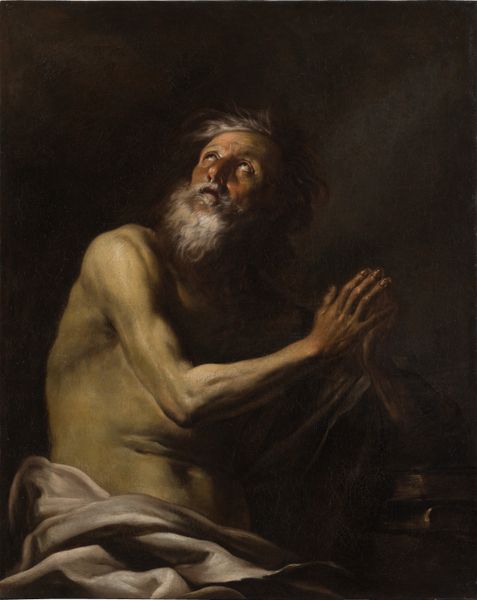
painting, oil-paint
#
portrait
#
portrait
#
painting
#
oil-paint
#
mannerism
#
history-painting
Copyright: Public Domain: Artvee
Curator: This is El Greco's "Saint Peter in Tears," painted sometime between 1587 and 1596. The use of oil paint allows him to capture such intense emotion. Editor: Immediately, I'm struck by the sheer agony etched on Saint Peter's face. It’s the anguish of betrayal rendered in swirling strokes. Curator: Absolutely. Look at the elongated fingers, clasped in supplication, and the upward gaze. It exemplifies the Mannerist style, doesn’t it? Let's consider the source of this pain—his denial of Christ. This image became vital in Counter-Reformation iconography. It reinforced the importance of repentance and devotion to the Church. Editor: I agree that its public role is obvious, but what about the way El Greco *made* this piece? Think about the materials he's choosing and the labor involved. The gold tones of his cloak seem deliberately tactile; it emphasizes Peter’s earthly status before spiritual ascension. Then you've got the keys – are these physically hefty? What kind of metal is this? Does their presence comment on power dynamics? Curator: The keys, symbols of papal authority, certainly invite us to ponder the role of the Church in Peter’s personal grief and beyond. There is such striking emotional openness – something which makes this work memorable, even for non-believers! Editor: And I suspect we are supposed to also feel the contrast between the rough cloth and possible precious metal to see both saintly denial and the real economics involved! The canvas isn't only an aesthetic space but is connected to complex economic systems and resources of the time. Curator: Precisely. It invites ongoing discourse about faith, regret, and power. Editor: For me, it also underscores the complex ways in which even religious artwork intersects with tangible materials and processes of creation.
Comments
No comments
Be the first to comment and join the conversation on the ultimate creative platform.
